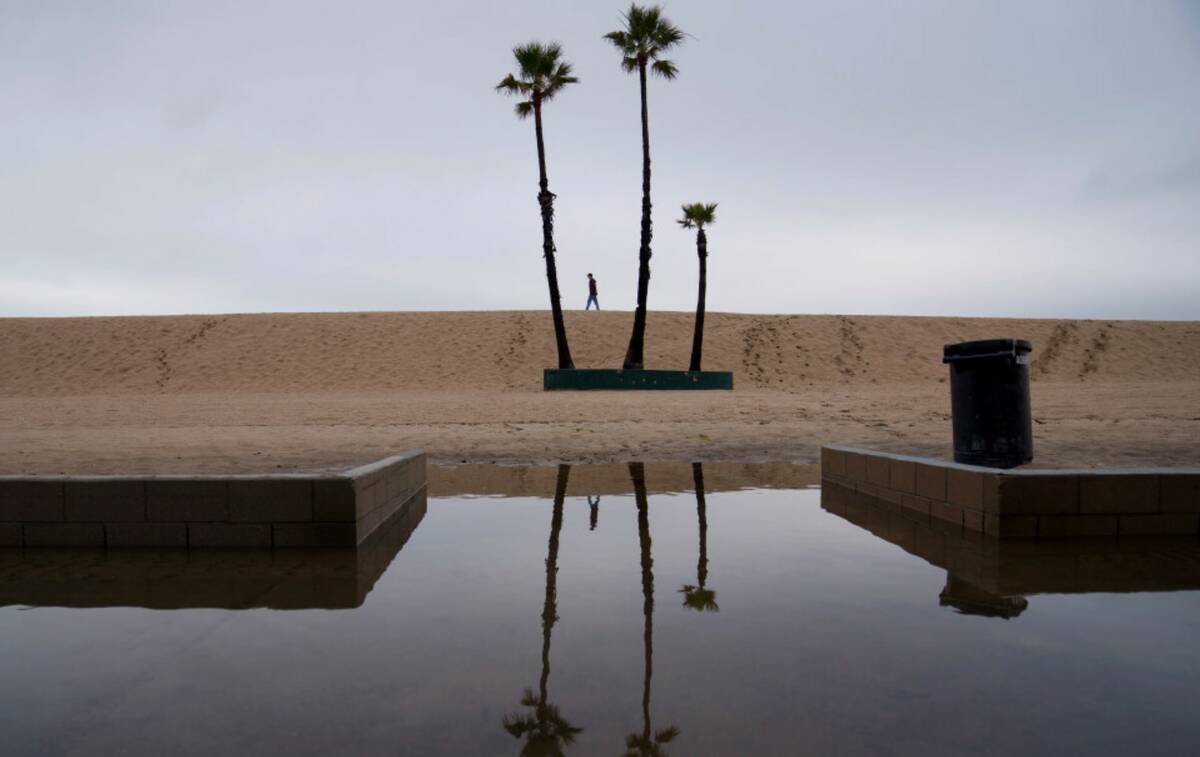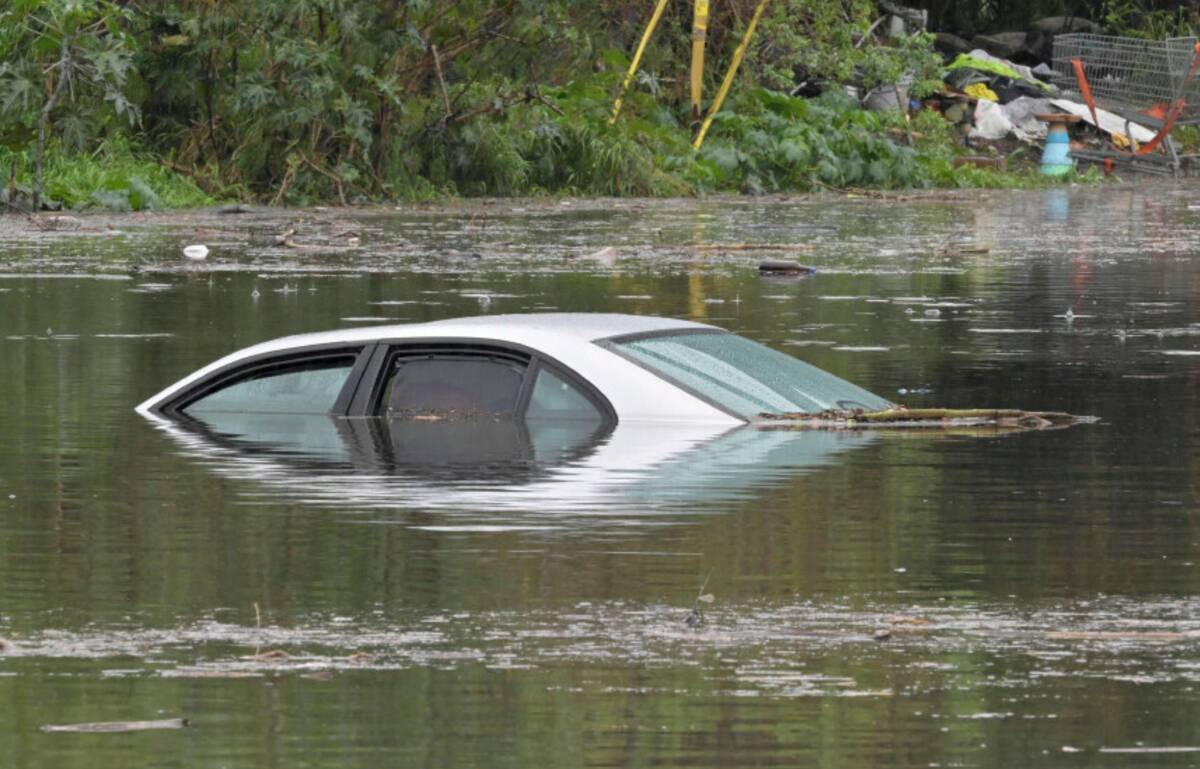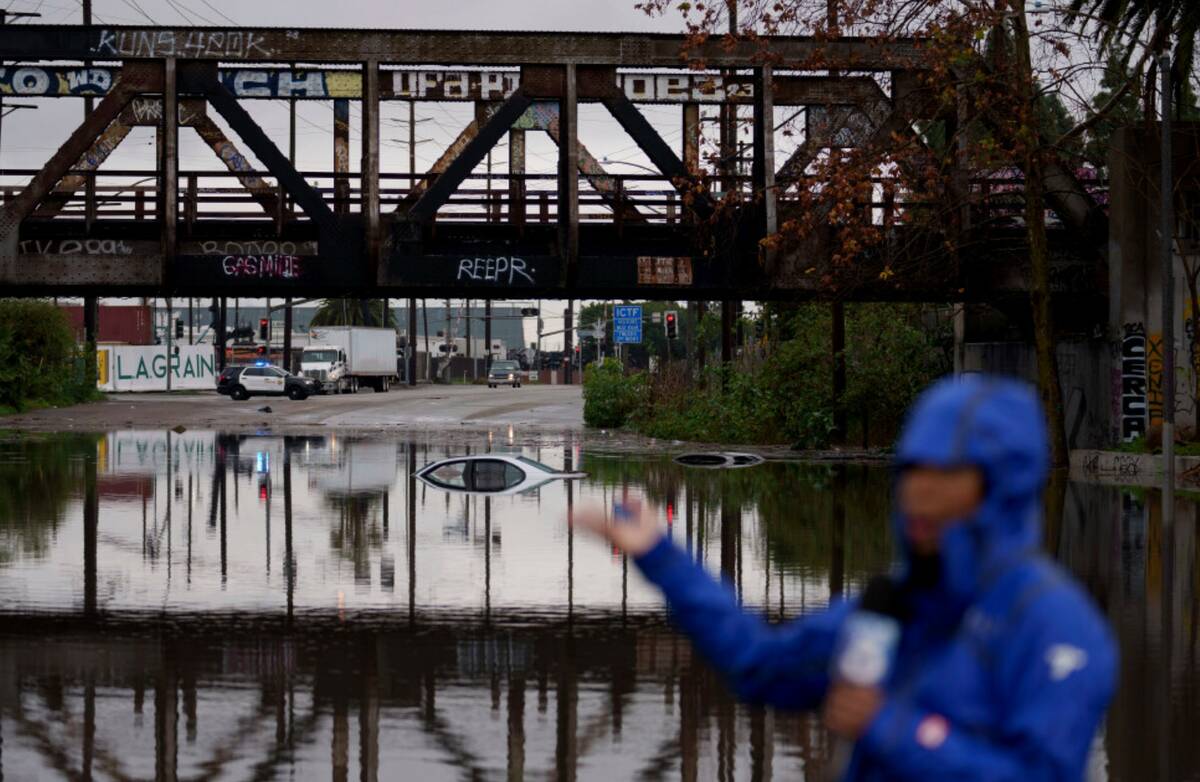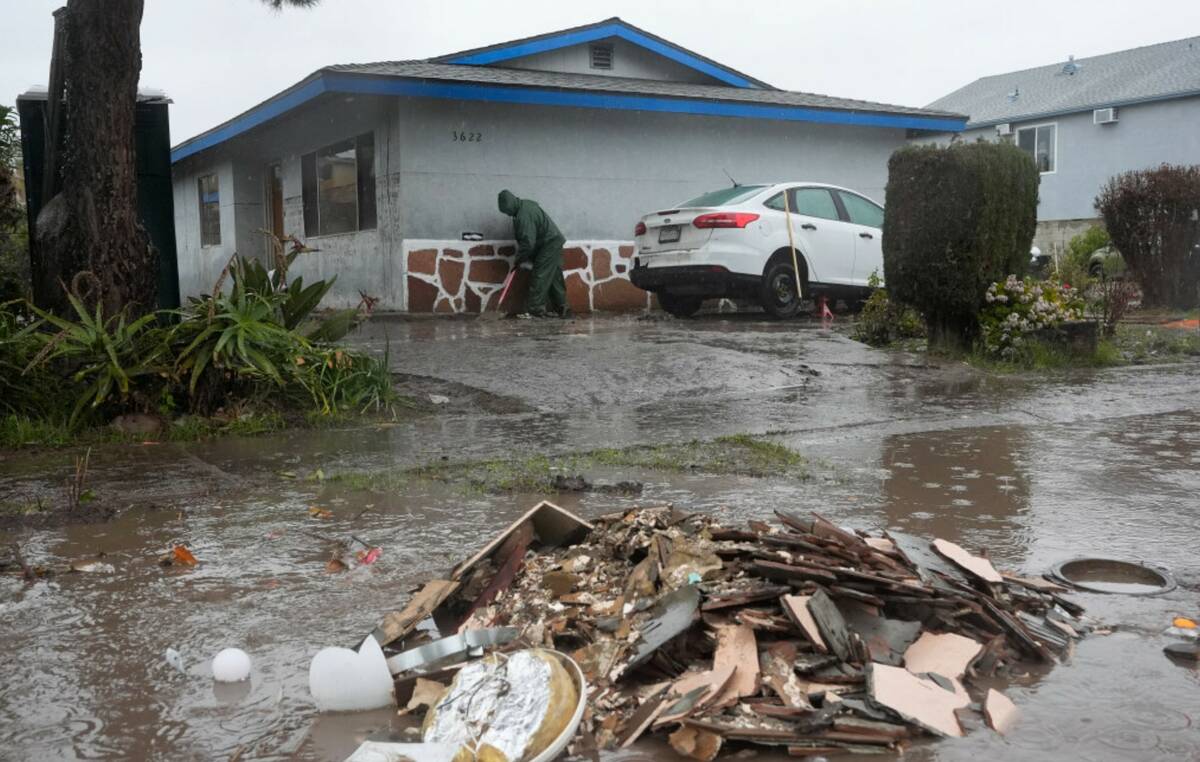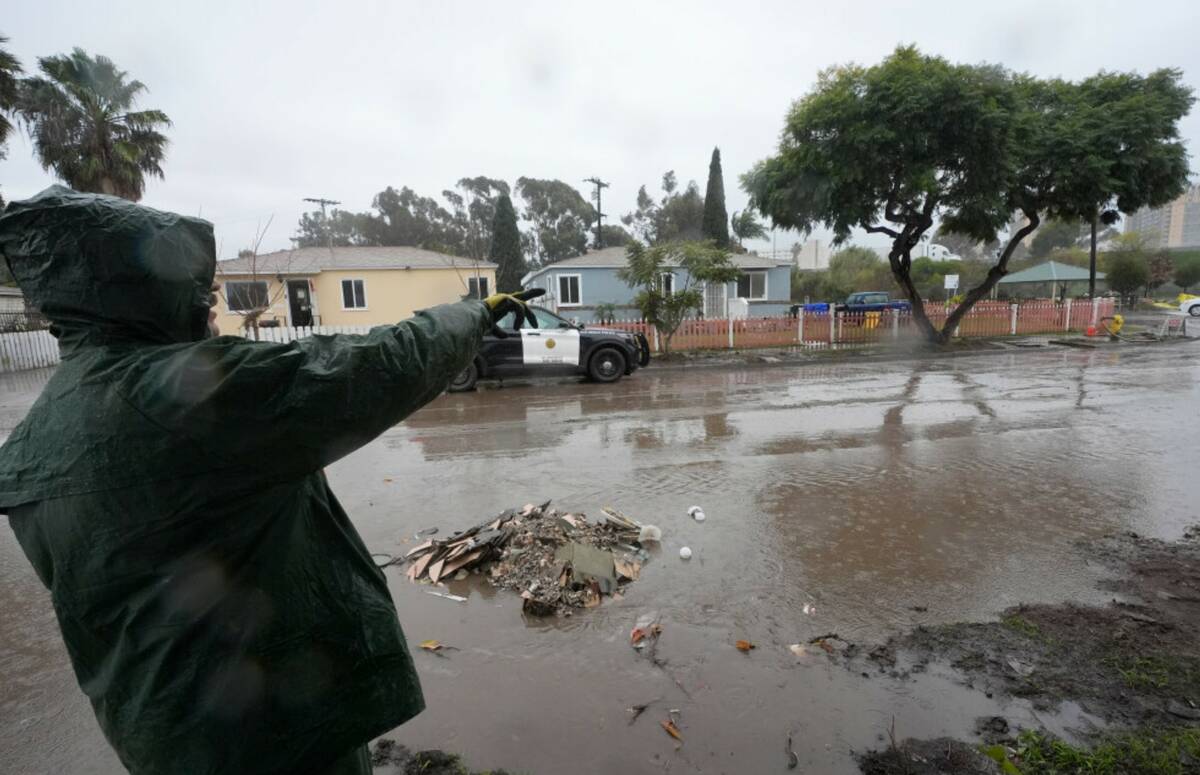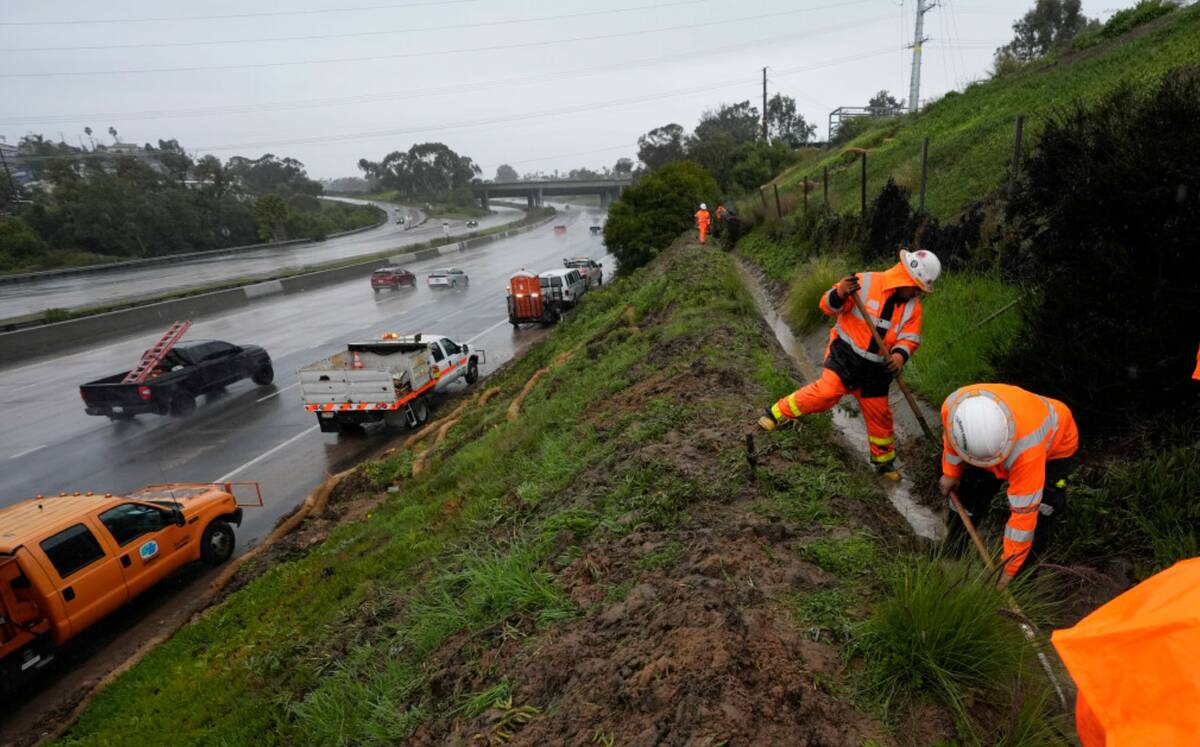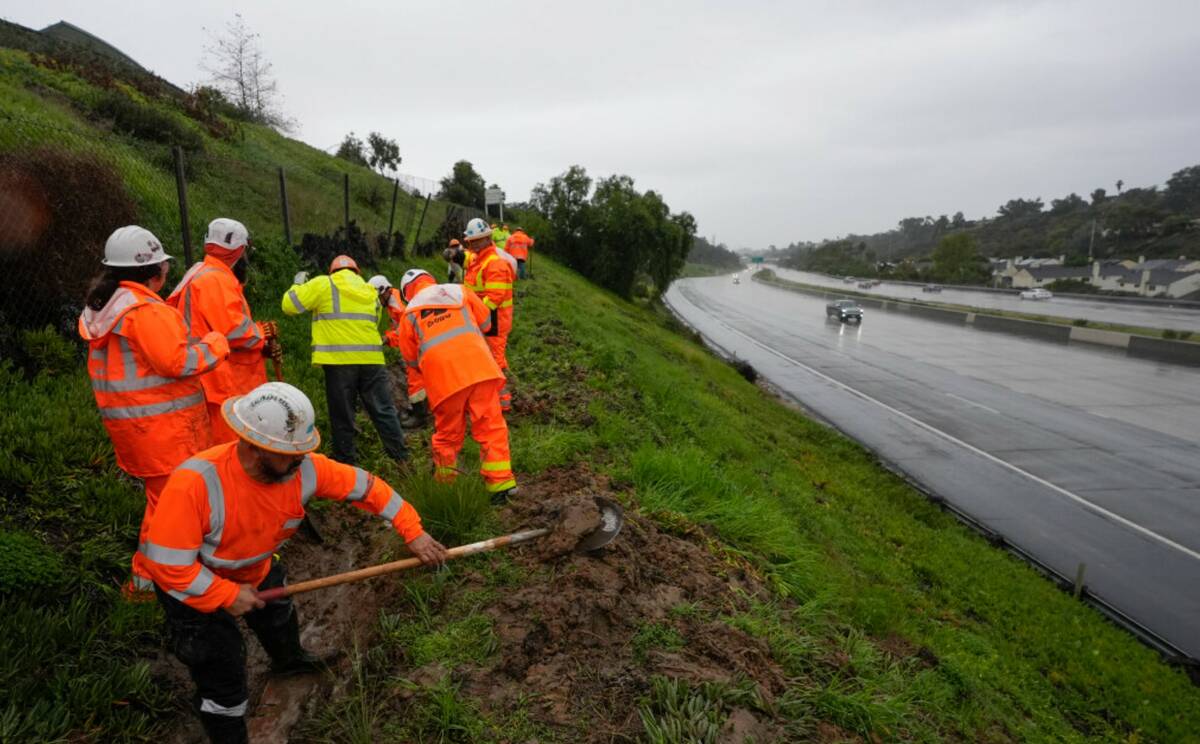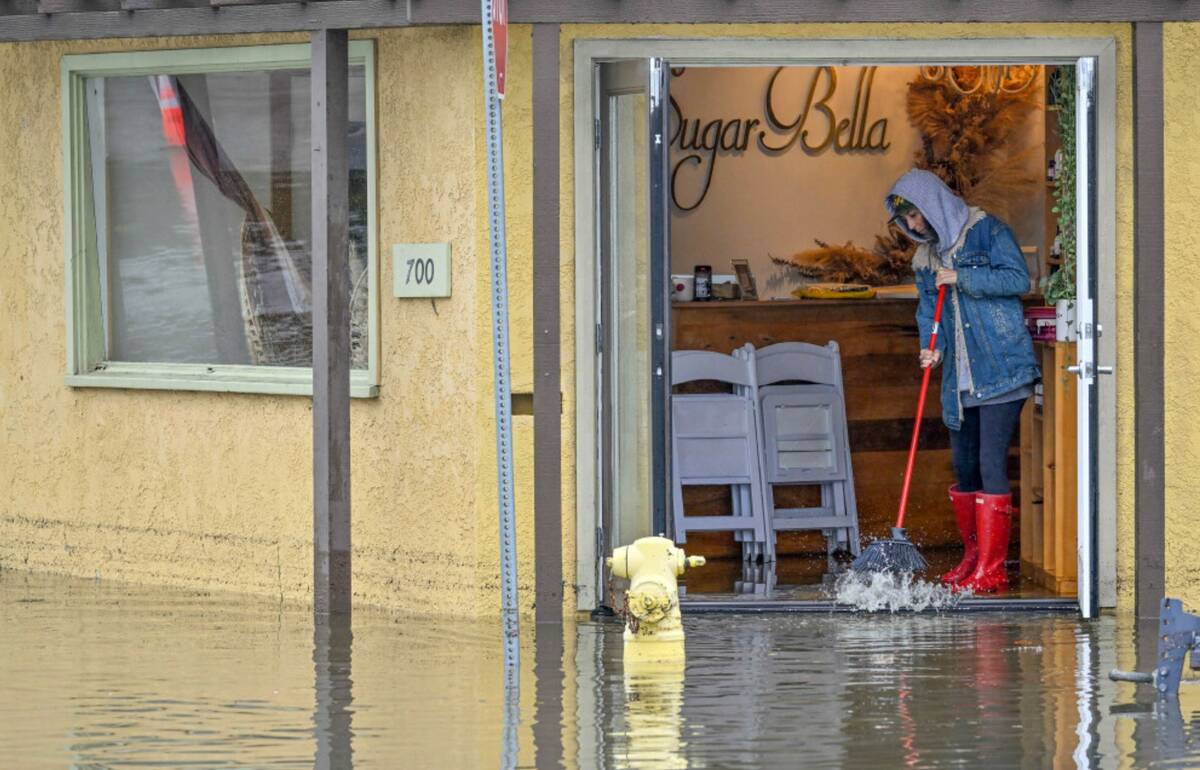‘Pineapple Express’ sweeps California as February begins — PHOTOS
LOS ANGELES — Heavy rain flooded California roadways and much-needed snow piled up in the mountains on Thursday as the first of back-to-back atmospheric rivers pummeled the state.
The storm focused its energy on the southern and eastern parts of the state after initially hitting the San Francisco Bay Area on Wednesday, where it halted cable car service. The downpours arrived in Southern California on Thursday in time to snarl the morning commute.
An atmospheric river, which is a long band of moisture that forms over the Pacific, was fueling the storms dousing the Los Angeles and San Diego areas on Thursday, said National Weather Service forecaster Bob Oravec.
Atmospheric rivers “typically occur ahead of cold fronts across the Pacific,” he said. “And when they interact with the West Coast topography, you often get some very heavy rain both along the coastal ranges and also inland through the Sierras.”
As sheets of rain fell in San Diego, Ruben Gomez cleaned debris from storm drains in his parents’ neighborhood Thursday that was hit hard by flooding in an earlier storm.
He piled sandbags around what was left of their home from the previous deluge. Firefighters had to rescue his parents, both 82, from the home after the earlier storm, which filled with water reaching six feet high (2 meters). His father spent two days in the hospital with hypothermia and his mother spent a week there after water entered one of her lungs.
“Every hole in the house, I’ve got plugged with plastic and paper to make sure water doesn’t go up so high again,” he said.
They have no insurance and are relying on donations from family, friends and neighbors. He said he is grateful still because his parents survived last time and are now safe at his home that is in an area less prone to flooding.
But last winter, the storms turned deadly. California was battered by numerous drought-busting atmospheric rivers that unleashed extensive flooding, big waves that hammered shoreline communities and extraordinary snowfall that crushed buildings. More than 20 people died.
Preparing for the express
This week’s “Pineapple Express” — called that because its long plume of moisture stretched back across the Pacific to near Hawaii — will be followed by an even more powerful storm on Sunday, forecasters said.
The California Governor’s Office of Emergency Services activated its operations center and positioned personnel and equipment in areas most at risk from the weather.
Brian Ferguson, the office’s deputy director of crisis communications, characterized the situation as “a significant threat to the safety of Californians.” He said an area stretching from the state’s border with Oregon all the way south to San Diego and from the coast into the mountains could be affected over the next 10 to 14 days.
“This really is a broad sweep of California that’s going to see threats over the coming week,” Ferguson said.
Storm effects
On Thursday, southern Los Angeles County was hit hard by flash flooding. Vehicles plowed through water on low-lying sections of freeways and at least one underpass beneath a rail crossing in Long Beach was inundated, submerging a car.
Seal Beach, south of Los Angeles, saw flooding along the Pacific Coast Highway on Thursday that closed parts of the freeway at times, with one white van stranded at an intersection. An employee swept water out of a storefront in the city’s downtown as onlookers dodged puddles after the rain slowed around noon.
In nearby Costa Mesa, a swift-water rescue team pulled someone from a flowing storm channel. The person was taken to hospital in stable condition, the Orange County Fire Authority said in a social media post.
The fire authority also rescued a man who was trapped on a small island in the Santa Ana riverbed, surrounded by rushing water. A paramedic had to be lowered by a helicopter to grab the man and whisk him to safety.
The Mammoth Mountain ski resort in the Sierra Nevada reported 12 to 14 inches of snow overnight. Earlier this week, state officials reported that the vital Sierra snowpack, which normally supplies about 30% of California’s water, was far below normal. Heavy snowfall was also reported in mountains east of Los Angeles.
The second atmospheric river, expected to move in late Saturday, is already predicted to be “the largest storm of the season,” according to the National Weather Service. The worst part of the storm will hit late Sunday into Monday as it stalls over Point Conception in Santa Barbara County.
“This system will likely produce 24 to 36 hours (or more) of continuous rain,” the weather service wrote Thursday in a forecast update.
Significant rain and, at higher elevations, snowfall are then expected to hit Southern California from Monday through Wednesday that could bring mudslides and dangerous flooding.



